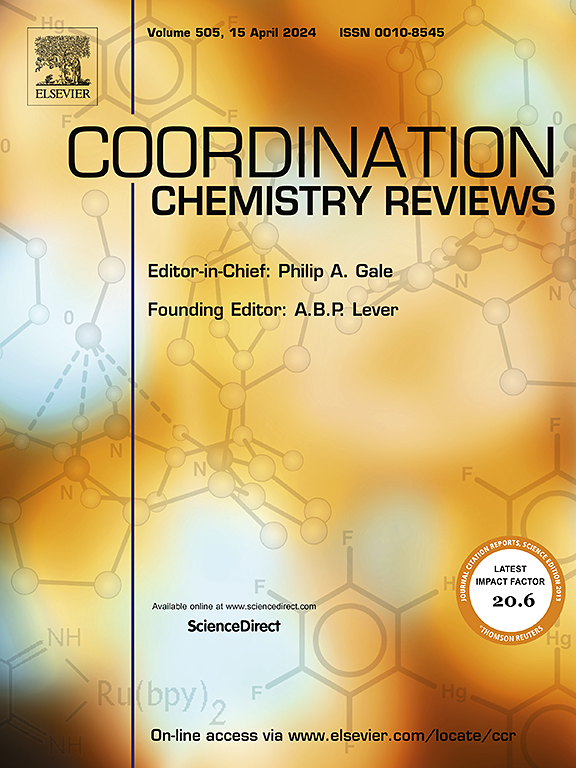Molecular weight enlargement of homogeneous catalysts for enhanced recovery via organic solvent nanofiltration: A critical review
IF 20.3
1区 化学
Q1 CHEMISTRY, INORGANIC & NUCLEAR
引用次数: 0
Abstract
Organic solvent nanofiltration (OSN), also known as Solvent resistant nanofiltration (SRNF), is an emerging technology for separating molecules in organic solvents, offering significant advantages over other separation techniques, including low solid waste generation and high energy efficiency. One of the critical factors that influence the performance of OSN membranes is the molecular weight of the catalysts used. However, over the last decade, it became evident that other physico-chemical factors, such as catalyst flexibility and polarity also affect the separation efficiency. This review critically examines the recent advances in the molecular weight enlargement of catalysts, typically through the tuning of ancillary ligands that coordinate onto the active metal centers, focusing on how these modifications affect the overall separation effectiveness in OSN. Key strategies for molecular weight enlargement, such as addition of bulky substituents, dendrimer formation, and use of macromolecular ligands, are analyzed in terms of their impact on catalyst retention and rejection efficiency. By providing a comprehensive overview of the current state of research, this review aims to guide future developments in the field and highlight the critical areas where further investigation is needed to optimize catalyst design for OSN applications.

通过有机溶剂纳滤提高回收率的均相催化剂的分子量增大:综述
有机溶剂纳滤(OSN),也称为耐溶剂纳滤(SRNF),是一种新兴的有机溶剂分子分离技术,与其他分离技术相比具有显著的优势,包括低固体废物产生和高能效。影响OSN膜性能的关键因素之一是催化剂的分子量。然而,在过去的十年中,很明显,其他物理化学因素,如催化剂的柔韧性和极性也会影响分离效率。这篇综述严格审查了催化剂分子量扩大的最新进展,通常是通过调整辅助配体来协调活性金属中心,重点是这些修饰如何影响OSN的整体分离效果。本文分析了增加分子量的关键策略,如添加大体积取代基、树突结构和大分子配体的使用,以及它们对催化剂保留和排斥效率的影响。通过对当前研究状况的全面概述,本综述旨在指导该领域的未来发展,并强调需要进一步研究的关键领域,以优化OSN应用的催化剂设计。
本文章由计算机程序翻译,如有差异,请以英文原文为准。
求助全文
约1分钟内获得全文
求助全文
来源期刊

Coordination Chemistry Reviews
化学-无机化学与核化学
CiteScore
34.30
自引率
5.30%
发文量
457
审稿时长
54 days
期刊介绍:
Coordination Chemistry Reviews offers rapid publication of review articles on current and significant topics in coordination chemistry, encompassing organometallic, supramolecular, theoretical, and bioinorganic chemistry. It also covers catalysis, materials chemistry, and metal-organic frameworks from a coordination chemistry perspective. Reviews summarize recent developments or discuss specific techniques, welcoming contributions from both established and emerging researchers.
The journal releases special issues on timely subjects, including those featuring contributions from specific regions or conferences. Occasional full-length book articles are also featured. Additionally, special volumes cover annual reviews of main group chemistry, transition metal group chemistry, and organometallic chemistry. These comprehensive reviews are vital resources for those engaged in coordination chemistry, further establishing Coordination Chemistry Reviews as a hub for insightful surveys in inorganic and physical inorganic chemistry.
 求助内容:
求助内容: 应助结果提醒方式:
应助结果提醒方式:


